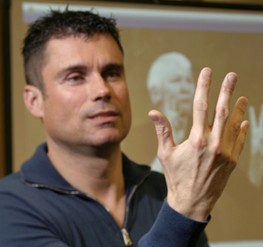
As the FCC continues to reform VRS under its mission to reduce “waste, fraud, and abuse,” Brandon Arthur urges sign language interpreters to maintain a presence in the decision-making process.
The October 15, 2012 Public Notice released by the Federal Communication Commission (FCC) has sent another wave of distress crashing over top of the already apprehensive sign language interpreters working in support the nation’s Video Relay Service (VRS). As these interpreters, awash in the regulatory storm of VRS reform, reach out for the relationships, practices, and leadership that have anchored them in the past, they appear to find themselves largely alone in rough and rising waters.
It has been nearly 12 months since the FCC dropped it’s December 15, 2011 FNPRM seeking substantial comment on the structure and practices of the nation’s VRS program, the last in Docket 10-51. With that filing, I found myself wondering if there is anyone—individual or entity—positioned to successfully snatch sign language interpreters from these troubled waters by prevailing upon regulators with a solution that more centrally considers functional equivalency and the plight of the sign language interpreter who makes that possible.
The Latest Signal From the FCC
The October 15, 2012 Public Notice released by the FCC is an indication to VRS stakeholders (consumers, interpreters, providers, educators, and industry associations) of it’s consideration of the TRS Fund Administrator’s (RLSA) October 15, 2012 Supplemental Filing, which proposes a transition to a cost-based model of reimbursement, resulting in deep cuts to the per minute reimbursement rate.
The RLSA proposes an immediate reduction of 11-15% to the rates paid to providers, with further reductions to follow in subsequent years. The aim being to move reimbursement rates towards the “weighted average cost per minute” of $3.51, as calculated by RLSA. The “initial” cut proposed, or something similar that the FCC ultimately approves, is likely to occur soon after the first of the year.
Unfortunately, for VRS users, sign language interpreters and providers, the targeted average cost of $3.51 per minute is 31%-44% below the current tiered reimbursement rates, which range from $6.24-$5.07 per minute. Adoption of a cost-based model and significant cuts to the current reimbursement rate will only intensify the impact of the reform on VRS users and sign language interpreters working to deliver it.
What’s the Impact?
In response to the December 15, 2011 FCC FNPRM referenced above, I wrote, Will Sign Language Interpreters Remain Silent on FCC VRS Reform? In that post I stated that should VRS reform occur without specific recognition for the cost and commitment of employing certified interpreters via a reimbursement rate differential, it would serve a damaging blow to the longevity of employing credentialed, qualified interpreters in VRS settings.
I offered then, and still believe, that the practical impacts of this fundamental failure are largely twofold:
1. The ultimate compromise of the functional equivalency of VRS.
Should the proposed rate reduction occur, providers would be forced to make fundamental shifts in their businesses in order to survive. As stated in my post referenced above, some of these shifts will almost certainly include to amp up performance expectations, decrease wages, and hire less-qualified practitioners in order to find cost savings. The necessity of being more efficient will result in an erosion of the quality, and therefore the functional equivalency, of VRS.
2. The destabilization of the sign language interpreting profession.
The cost pressures will inevitably be too much for the smallest of the handful of providers remaining today. As such, the sign language interpreting industry will continue to see a consolidation of opportunity. This consolidation and the tremendous pressure to be efficient will result in fewer opportunities for credentialed, qualified interpreters to work in VRS settings.
The natural consequence of this declining opportunity will be an imbalance in the industry’s supply (excess number of qualified, credentialed interpreters looking for work) vs. demand (organizations and agencies seeking to hire interpreters) equation. With a greater number of sign language interpreters competing for decreasing opportunity a dog-eat-dog erosion of the best practices—designed to protect the accuracy of an interpreter’s work and their very health and wellbeing—will ensue.
In my view, the results of this supply vs. demand imbalance and the erosion of best practices will also impact interpreters working in Community settings. With rates and opportunity decreasing in VRS, the more highly qualified interpreters will start competing for Community work, which will lead to reducing rates for community work.
There are no safe-havens from VRS reform.
In my mind, these impacts are as real and relevant today as the day they were offered last year. In some cases, they are already being seen and experienced as shared by Karen Graham in her piece, Sign Language Interpreters: The Unintended Victims of VRS Regulation Change.
Again, adoption of a cost based approach to rate setting and deep rate cuts, as proposed by RSLA, will only accelerate the impact of this reform on D/deaf and Hard-of-Hearing users of the service and sign language interpreters working to deliver it.
A Call for Heroes and Heroines
At this point, sign language interpreters need someone—individual or entity—with the expertise and resources willing to wade into the rough water. Interpreters need someone willing to demonstrate that the work they do is central to the meaning of functional equivalency. Further, that an interpreter’s continued commitment to their craft and profession is fundamental to the interests and success of all VRS stakeholders.
Unfortunately, the FCC’s mistrust of providers; their perception that providers are motivated by self-interest when advocating for interpreters; and the resource challenge historically faced by industry associations to organize and mobilize support, will likely continue to leave sign language interpreters awash in the reform.
Will anyone wade in and extend a hand to the sign language interpreter?
The Truth?
There will be no caped crusader, individual or entity.
Clearly, the FCC’s disposition relative to providers and cost-reduction won’t change quickly enough to position them to help. Industry associations will not suddenly find themselves with lined coffers and new infrastructure to organize and mobilize meaningful support. Sadly, the remaining VRS stakeholders will serve only to amplify the volume of the shouting and cross-direction offered regarding how and where sign language interpreters can find their footing and protect their interests in the reform.
Is there any hope?
Yes.
Survival is Up to Us!
We need to empower ourselves in order to survive!
Given the regulatory and economic environment and the relative progress of the reform, we must be organized, disciplined, and consistent. We need to ensure that the FCC understands the challenged position of the sign language interpreter in the reform and the responsibility they have to the human performance side of the VRS system.
What should we do?
Mobilize. Mobilize! Mobilize!!
In order to be recognized by the FCC, we are left with little choice but to muster our own motility.
How can we do this?
1. File Public Comment
It is important that every sign language interpreter file comment with the FCC. In my post, FCC VRS Reform Part II: Sign Language Interpreters File Public Comment, I offered detailed instruction on how to post comment to the FCC. We need to do this more now than ever.
It is important to note that we have until November 14th to file comment on the proposed rate structure—then an opportunity to file again prior to November 29th. Please follow the guidelines and remember that you are submitting comment on a public forum. Post responses from a solution orientation.
Join me in advocating for the future of our collective quality of life by filing comment?
Need talking points? You can find a few here.
2. Enroll Our Partners
We need to enroll, prod if necessary, all those that share an interest in the functional equivalency of VRS. We need to request that they stand up and take action now. We need to place calls to each and every VRS stakeholders and communicate our expectation that they join in the effort.
Let’s not forget that our Senators and Congressional Representatives are also our partners. We should be sending them letters as well seeking their support.
We should not assume that anyone is standing with us until they are.
3. Petitions of Support
It is essential to demonstrate the impact of the reform on everyone touched by VRS. While friends and family members may not be inclined to file public comment, we should encourage them and all our colleagues to sign petitions in support of a rate differential for certified interpreters in order to protect functional equivalency.
Sign and forward this petition of support to get the ball rolling.
4. Rally at the FCC
While it may be considered a tactic of the past, civil disobedience in the form of a rally would go far in gaining the attention of the FCC. Let’s be prepared to employ this tactic if it becomes necessary to convince the FCC that we do not intend to be a quiet casualty of the reform.
While I am not familiar with what it takes to organize a rally, I am certainly willing to help. Anyone interested in helping to organize an effort? If yes, you can Facebook me here.
Donate to the effort by clicking here.
5. Other Tactics
While I think filing public comments and a rally will go far to gain the attention of the FCC, I do think we should reinforce our plight with the FCC by doing the following:
A. Mobile Billboards. Organize an effort to drive billboards past the FCC reminding them to not forget the sign language interpreter in the reform.
Interested in helping to organize and coordinate this effort? If yes, you can Facebook me here.
Donate to the effort by clicking here.
B. Social Media Blitz. Organize an effort to bring VRS stakeholders together to talk about the impact of the proposed rate reduction on functional equivalency and the ability to hire certified interpreters. Publish the interviews widely.
Interested in helping to organize and coordinate an effort? Know a graphic designer or videographer? If yes, you can Facebook me here.
Donate to the effort by clicking here.
6. Friends of the Sign Language Interpreter—Political Action Fund
In my mind, it is necessary for sign language interpreters to create and contribute to a fund to lobby congress and the FCC. This will position sign language interpreters to have an independent voice that is free from the politics, economic implications, inexperience and mistrust that has to date prevented interpreters from finding their footing.
Is someone familiar with setting up this type of thing? I have some ideas, but experience would speed up the effort. Interested in organizing, coordinating, and/or donating to the effort? If yes, Facebook me here.
Interested in donating to the effort? Facebook me and I will provide updates if we can get something set up.
Let’s Be Careful
While this is in fact a survival activity, it is important to maintain a level of respect for other VRS stakeholders. By maintaining respect, we are better able to thoughtfully consider how to best achieve our ambitions while maintaining relationships with our partners. It is essential that we remember that this isn’t a zero sum proposition. Each VRS stakeholder can be successful if we remember that every action has a reaction.
In addition to maintaining respect, we would do well to avoid the following:
1. Knee Jerk Reactions.
We should not give control at the discussion table to anyone but us. Our partners haven’t done well representing our interests at the FCC. It is time for us to marshal our collective genius and do the dirty work we have avoided to date.
2. Creating Inertia.
Placing the field or ourselves in a position that limits our ability to adapt quickly to a rapidly changing environment.
3. Avoid Unionization.
We should not unionize. No one can better articulate the impacts of VRS reform without consideration for human performance than the sign language interpreter. Let’s set up a political action fund and do a more effective job without the long-term damage to the ability sign language interpreters have to represent themselves. Not to mention the time period for effective action on VRS rate reform is far too short for such an effort to be successful.
4. Making it About the Money.
Avoid conversation about this being about money for the sign language interpreter. This is about pushing the FCC to recognize what it takes to offer a functionally equivalent service and the commitment interpreters make to their consumers and careers by pursuing certification.
This is urgent. We are nearly out of time to impact real change.
Let’s avoid engaging in actions that contribute to the erosion of the trust needed for consumers, interpreters, providers, industry associations and the FCC to navigate the reform to positive ends.
Conclusion
While it can be uncomfortable to be faced with the pace of continued change in VRS regulation, let’ not allow our own paralysis to enable the careless treatment of functional equivalency and the devaluation of the credentials and contributions of the sign language interpreter, to go on without adamant opposition.
At the end of the day, our survival in the reform depends on us. If you value your profession, the definition under which you do you work, and the diversity VRS brings sign language interpreting industry, you too have an interest in making your voice heard at the FCC.
While it appears that the FCC is prepared for an acceptable number of casualties in the name of efficiency, will you allow sign language interpreters be found among them?
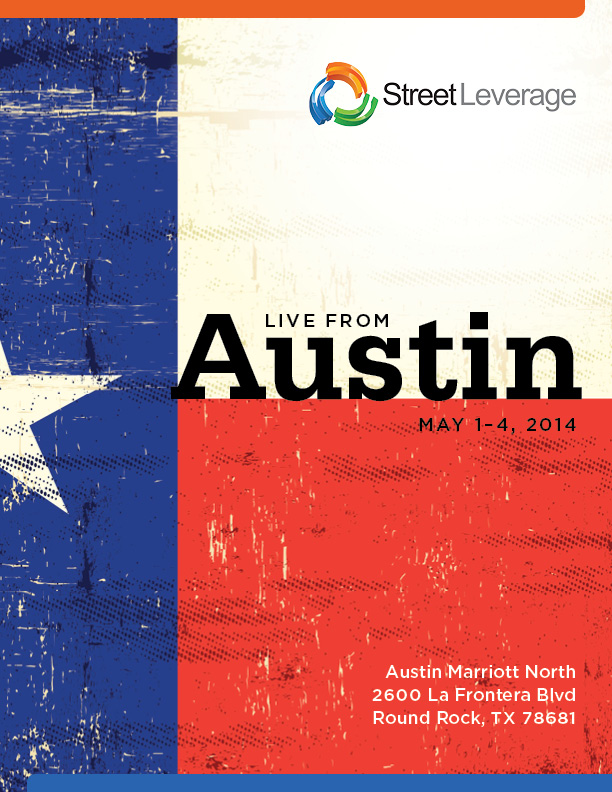
 March 10, 2013:
March 10, 2013:
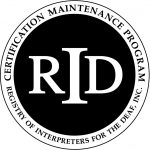







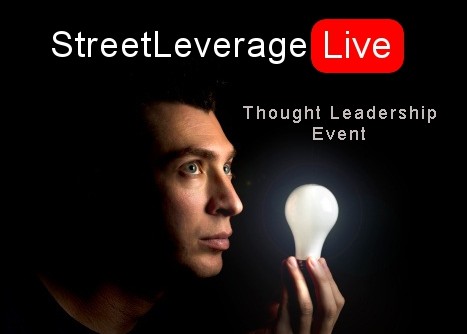
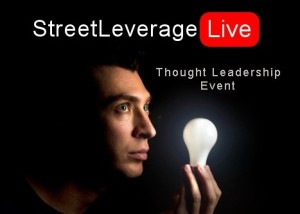 What do projectile vomiting, cancelled and delayed flights, and an unrelenting Nor’easter have in common?
What do projectile vomiting, cancelled and delayed flights, and an unrelenting Nor’easter have in common? 